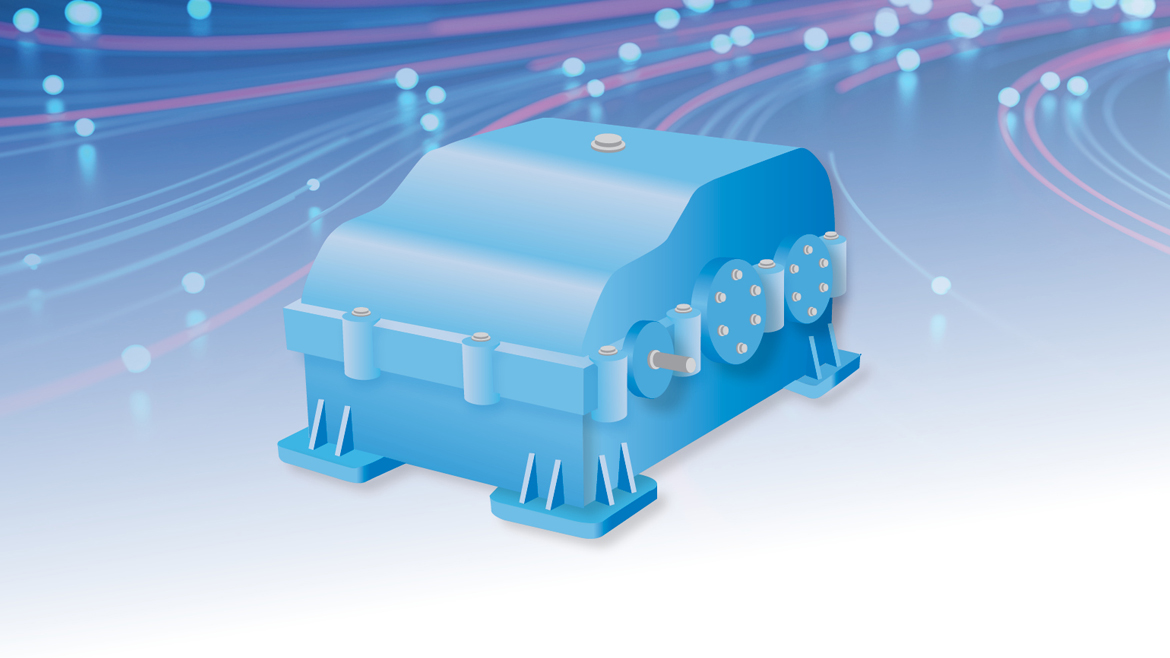How it Works - Industrial Gearboxes
Industrial Gearboxes
Industrial gearboxes are used to change speed, direction, and torque, usually between a motor and a shaft that drives equipment.

Fitted in locations such as steel mills, mining operations, and wind turbines, they are often exposed to arduous conditions including extremes of temperature, humidity, vibration, and contamination, often with little maintenance.
Read on to learn more about gearbox components and how they work.
Industrial Gearbox Components
Gears
The purpose of all gears is to transfer power between a system and allow for a wide variety of speeds/loads to be achieved for a fixed range of input speed/loads. This is done by altering the gear ratio; a gear ratio is defined by the number of rotations the input needs to complete for one rotation of the output. There’s a range of different gear designs, all offering a range of noise levels, degree of contact between the teeth, the orientation of force transfer, and, of course, production cost.
Bearings
The purpose of all bearings is to support rotating shafts used to transfer power while minimizing friction. Bearings come in two main categories: journal bearings and rolling element bearings. Journal bearings have no moving parts and rely on simple lubricated surface-to-surface contact, whereas rolling element bearings consist of several components (one race that is fixed to the stationary housing and another that is fixed to the rotating shaft, several rolling elements and a cage to hold the rolling elements in place). Rolling element bearings have a large variety of different designs.
Seals
Industrial gearboxes contain numerous seals. These are typically elastomeric seals, which expand or contract to ensure fluids cannot pass through. Some seals are static while others are dynamic. Static seals fit between fixed parts of the gearbox while dynamic seals fit between a fixed and a moving part such as a drive shaft.
The purpose of the seal is to retain the industrial gear oil within the gearbox and to prevent the ingress of contaminants. Significant loss of oil from a gearbox due to leakage ultimately results in gearbox failure. Significant ingress of water or dirt into a gearbox can lead to a whole host of issues and potentially gearbox damage and failure. Engineers recognize that seals may be degraded by the environment they operate in (oxygen, ozone, UV, etc.) and by operation (heat, mechanical stress, etc.).
The Importance of Paint Compatibility
Many industrial gearboxes are painted both inside and out to provide a protective film during dry storage and operation. The paints used on each surface normally differ. If paint films fail and the surface is not fully protected by oil, then there is the potential for corrosion. If an internal paint film breaks down, it can also block filters and contribute towards additional failure modes within the gearbox. Lubricants and the various paints and coatings applied to industrial gearboxes must be compatible with each other.
Viscosity Needs
Viscosity refers to a fluid’s flow under the resistance of shear force. The thicker the fluid, the slower the flow. Vice versa, the thinner the fluid, the faster the flow. As you may imagine, different applications require different lubricant viscosity grades to adequately protect equipment and ensure optimal performance.
When thinking about industrial gearboxes, the necessary viscosity of the oil is determined by several different factors:
- Amount of power running through the gearbox
- Predicted operating temperatures
- The type of gears and bearings used in the gearbox
Industrial gear product line viscosity grades vary, but generally range from International Standards Organization (ISO) VG 68 to a thicker ISO VG 1000, with primary volumes being ISO VG 150, 220 and 320.
A good way to think about it: Industrial lubricant viscosity grades are thicker than an engine oil, but thinner than a grease.
See related posts below or links within this article to learn more.